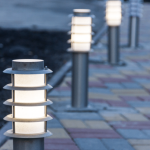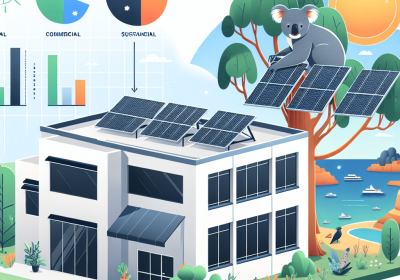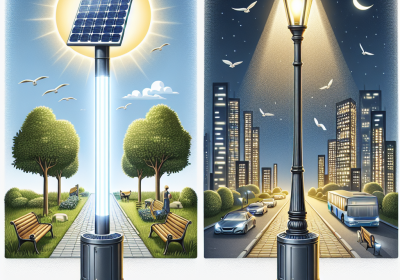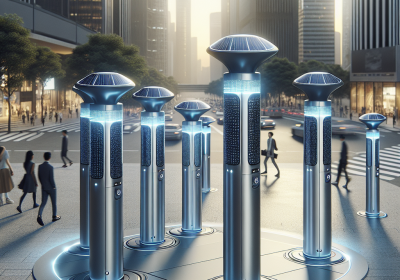The Role of Solar Bollards in Australia’s Varied Climates
Have you ever wondered how outdoor lighting withstands the diverse and harsh weather conditions of Australia? Solar bollards are a sustainable solution that not only light up pathways and public spaces but also withstand the test of time and climate. But why is the durability and performance of these solar bollards so crucial in Australia? Let’s dive in and discover the resilience of solar bollards across Australia’s challenging weather patterns.
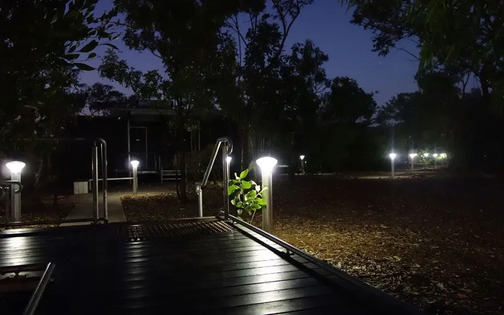
Understanding Australian Climates
Australia is a continent of extreme climates, from the humid tropics in the north to the arid deserts in the center and the temperate regions in the south. Not to forget, some regions near the coast experience a Mediterranean climate. Each of these climate zones presents unique challenges:
- Tropical Zone: Intense humidity and heavy rainfall.
- Arid Zone: Extreme heat and minimal rainfall.
- Temperate Zone: Mild weather with moderate rainfall.
- Mediterranean Zone: Hot, dry summers and cool, wet winters.
Features of Solar Bollards
Construction and Design
Solar bollards are designed to be robust. They are typically made from materials like stainless steel or reinforced composites that are resistant to corrosion and wear. But what makes them specifically suited to handle diverse weather conditions?
Solar Technology
At the heart of a solar bollard is its solar panel, battery, and LED lighting. The solar panels are treated with anti-reflective coatings to maximize sunlight absorption. Modern batteries store enough power to keep the lights on all night, even after cloudy days, and LEDs are chosen for their longevity and energy efficiency.
Adaptability
Solar bollards in Australia are often equipped with features like adjustable light settings and backup power systems to handle prolonged bad weather. This adaptability is crucial for maintaining performance across varying environmental conditions.
Durability Challenges in Australian Weather
Impact of Sun and UV Radiation
In regions with high UV levels, like Australia, solar bollards must withstand potential damage from intense sun exposure that can degrade many materials. How do solar bollards cope with this? UV-resistant materials and protective coatings play a crucial role.
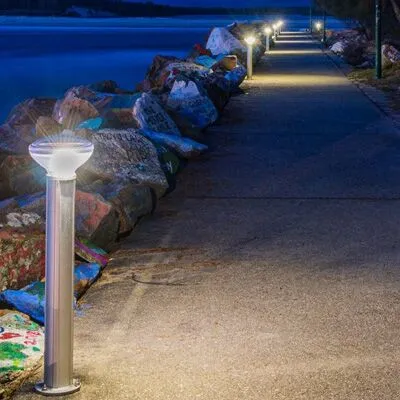
Water and Humidity Resistance
In tropical and temperate zones, the ability to resist water ingress is vital. Solar bollards use watertight seals and elevated electrical components to avoid water damage, ensuring they continue to function even during heavy rainfall.
Dust and Heat
The arid zones of Australia pose a challenge with their high temperatures and dusty conditions. Solar bollards here are designed with dust-resistant features and cooling systems to prevent overheating and clogging.
Cold Temperature Effects
Though less common, cold temperatures in higher altitudes or southern regions can affect battery performance. Special battery types that can operate in lower temperatures are used in these areas.
Tips for Selecting the Right Solar Bollards for Different Australian Climates
- Evaluate the Material Durability: Choose materials known for their resistance to UV radiation and corrosion, especially for coastal and arid zones.
- Consider the Battery Life: Opt for solar bollards with high-quality, long-lasting batteries that can handle temperature fluctuations and cloudy days typical of your specific region.
- Assess Solar Panel Efficiency: Ensure the solar panels are highly efficient and come with a protective coating to withstand the local environmental conditions.
- Check Water Resistance Levels: For tropical and temperate climates, select solar bollards rated high for water resistance to withstand heavy rains.
- Prioritize Adjustable Features: Look for models that offer adjustable light settings and angles to maximize solar gain throughout the year, regardless of the sun’s position.
- Plan for Maintenance Access: Choose designs that are easy to maintain and repair, which will help in reducing long-term costs and improving durability.
Performance Evaluation Across Different Climates
Case Studies
- Darwin, Tropical Zone: Solar bollards here are often equipped with extra water-resistant features and have shown resilience in the face of yearly monsoons.
- Alice Springs, Arid Zone: Enhanced cooling systems help these solar bollards manage extreme heat and maintain light output.
- Melbourne, Temperate Zone: Bollards here balance features to handle both moderate heat and cold, with good feedback on their consistent performance.
Feedback
Municipalities report that modern solar bollards require significantly less maintenance compared to traditional lighting, and private entities appreciate the reduced operational costs due to the efficiency of solar power.
Technological Advancements and Improvements
Recent improvements in materials include the use of advanced polymers and composites that are both light and extremely durable. Innovations in battery and solar cell technology continue to enhance efficiency and resilience.
Case Study Highlights
From the bustling streets of Sydney to the serene paths of Perth’s parks, solar bollards have proven their worth. Testimonials from city planners and environmental experts underline the positive impact of these installations in urban and rural settings alike.
Future Prospects
Emerging trends in technology, such as IoT integration, promise smarter energy management and even greater efficiency. Research into more sustainable materials and designs is ongoing, driven by government policies and environmental initiatives.
Choosing the right solar bollard solution is crucial in accommodating the diverse climates of Australia. Their impact on urban planning and sustainability is profound, making them a key component of future-proofing public spaces.
Interesting Facts About Solar Bollards in Australia
- Energy Savings: Solar bollards save on average 50-70% in energy costs compared to traditional wired lighting solutions.
- Carbon Footprint Reduction: Each solar bollard is estimated to reduce carbon emissions by up to 200 kilograms annually.
- Widespread Adoption: Over 10,000 solar bollards have been installed in public parks and pathways across Australia in the past decade.
- Technology Integration: Recent models of solar bollards incorporate smart technology, allowing for remote monitoring and management of lighting schedules.
- Impact Resistance: Many solar bollards installed in urban areas are designed to be impact-resistant, capable of withstanding minor collisions and vandalism.
- Wildlife Protection: Solar bollards are often used near sensitive wildlife areas to reduce light pollution, as they can be programmed to dim or turn off to minimize disruption to nocturnal animals.
FAQs
Q: How long do solar bollards last?
A: Typically, solar bollards are designed to last between 10-15 years with proper maintenance.
Q: Can solar bollards work during prolonged cloudy weather?
A: Yes, modern solar bollards are equipped with batteries that can store multiple days’ worth of energy to ensure consistent performance.
Q: Are solar bollards environmentally friendly?
A: Absolutely, they utilize renewable solar energy, reducing the carbon footprint and promoting sustainability in urban environments.
References:
https://orcasolarlighting.com.au/solar-bollard-lighting
Read more about commercial solar street lights
Illuminating the Path: The Rise of Commercial Solar Bollards in Australian Landscapes
Eco-Friendly and Efficient: How Solar Bollards Are Shaping Australia’s Green Cities
Cost Analysis: The Long-Term Savings of Solar Bollards Over Traditional Lighting Solutions
Innovation in Illumination: The Latest Technologies in Solar Bollard Design
Regulatory Insights: Compliance and Standards for Installing Solar Bollards in Australia
Public Perception and Acceptance: Community Responses to Solar Bollards in Urban Areas
The Future of Outdoor Lighting: Predictions for Solar Bollards in the Next Decade



